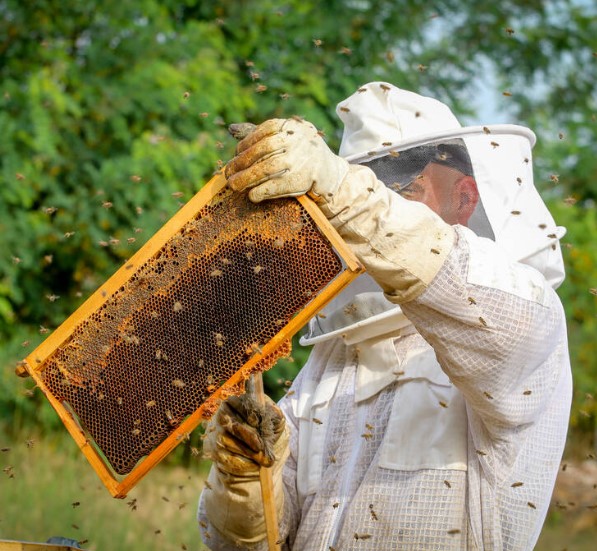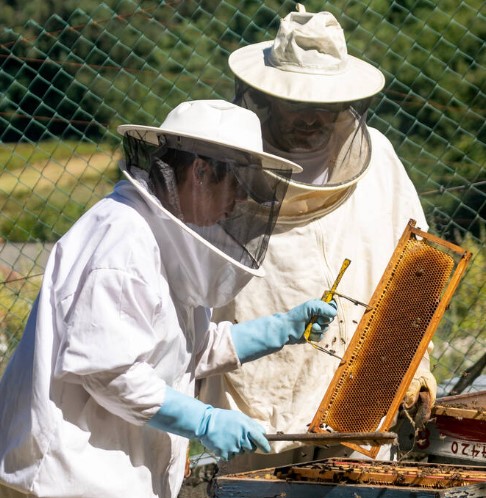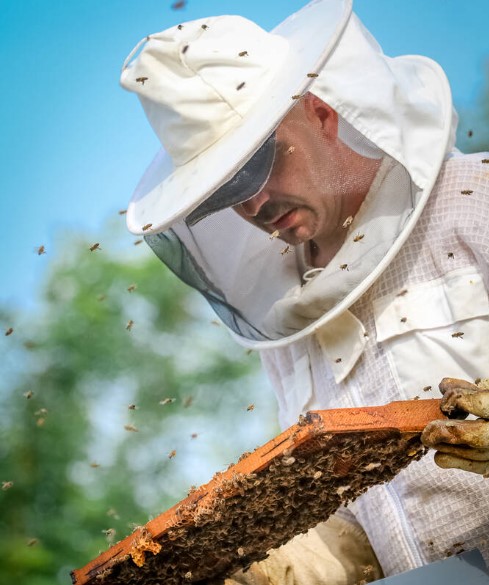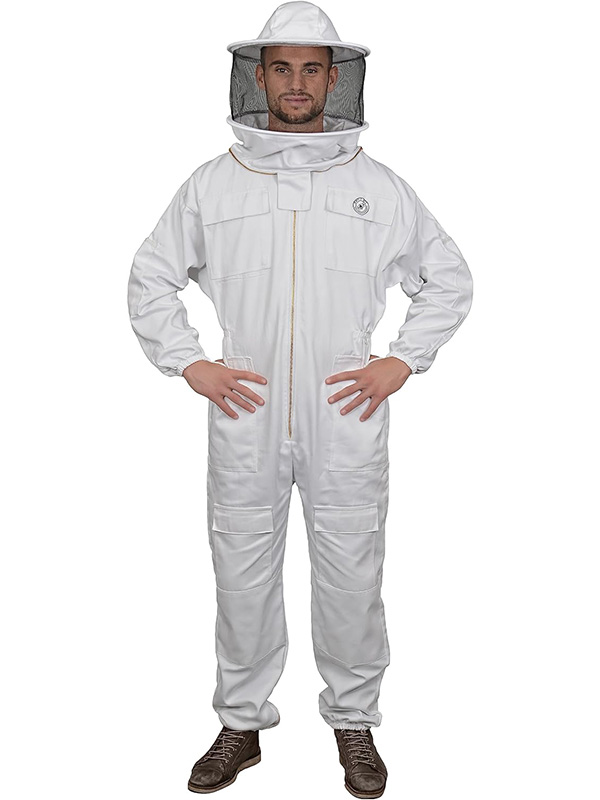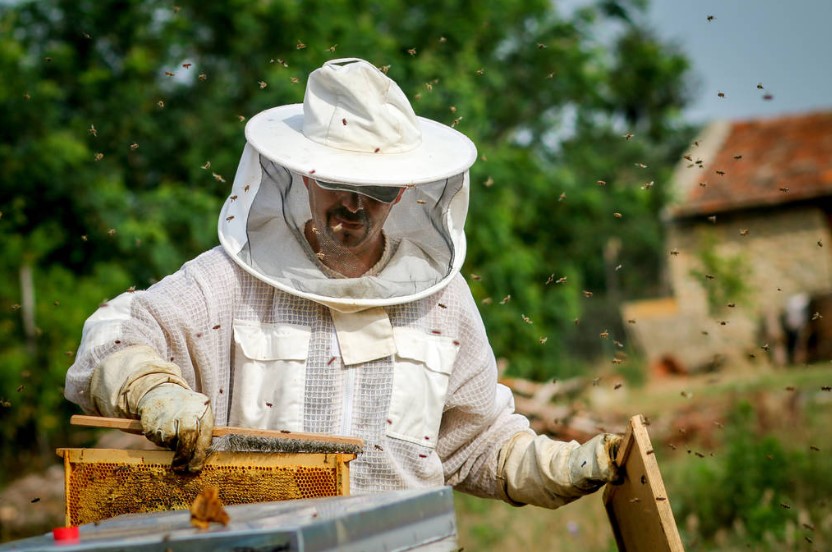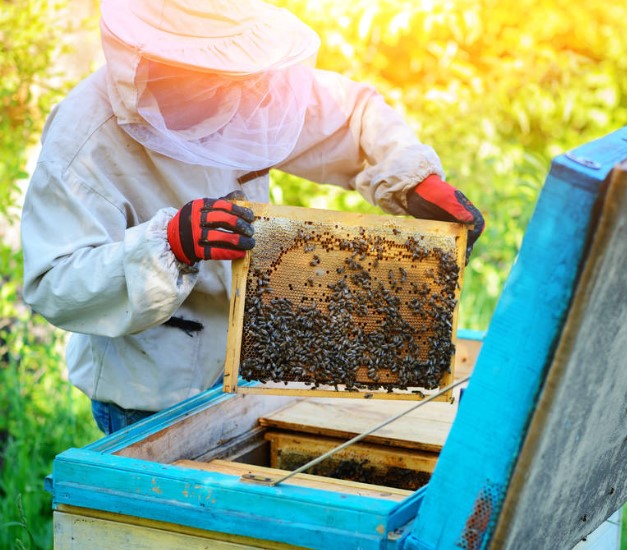Beekeeping Suits
Get ready for a sting-free beekeeping season – explore our range of protective beekeeping suits and find your perfect match today!
Essential Guide to Beekeeping Suits: Materials, Design, and Protection
Beekeeping suits are an indispensable part of a beekeeper’s gear, serving as the first line of defense against bee stings. These suits are meticulously designed to offer protection while ensuring comfort and mobility during the intricate process of beekeeping. Typically, they are made from a blend of cotton and synthetic materials, striking a balance between durability and breathability. The choice of light colors, predominantly white or beige, is intentional; these hues are less likely to provoke bees compared to darker shades. Moreover, the suits feature a full-body design, covering the beekeeper from head to toe, and are equipped with a protective veil. This veil is a critical component, shielding the face and neck while allowing clear visibility and air circulation.
The design of beekeeping suits includes several key features aimed at maximizing protection and usability. Elastic cuffs and ankles are standard, ensuring that the suit fits snugly and prevents bees from entering. The closures of these suits, typically made up of zippers or Velcro, are designed to be secure and easy to operate. For enhanced comfort, especially in warmer climates, ventilated suits with mesh panels have become increasingly popular, allowing for better air flow. The integration of pockets is also a thoughtful addition, providing convenient storage for tools and personal items. When it comes to maintenance, these suits are generally easy to care for, requiring regular gentle washing to remove any bee-related residues. It’s essential to store them in cool, dry places to maintain their protective qualities. Over time, advancements in fabric technology and design have continued to improve beekeeping suits, with a growing emphasis on eco-friendly materials and ergonomic designs that cater to a wide range of beekeepers’ needs, from hobbyists to professionals.
Key Features About Beekeeping Suits
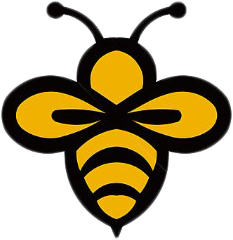
Material Composition: Blend of cotton and synthetic fibers, with options for ventilated fabrics.

Color Scheme: Generally light colors like white or beige to be less provocative to bees.

Full-Body Coverage: Ensuring complete protection from head to toe.

Protective Veil: Integrated into the suit to protect the face and neck.

Elastic Cuffs and Ankles: To prevent bees from entering the suit.

Secure Closures: Zippers or velcro closures for added safety.

Breathability: Especially important in ventilated suits for use in warmer climates.

Durability: Reinforced stitching and fabric strength for longevity.

Comfort and Fit: Loose enough for mobility but secure to offer protection.

Compatibility with Gloves: Ensuring a seamless overlap with suit sleeves.

Size Range: Availability in various sizes, including options for children.

Ease of Maintenance: Suitability for regular washing and care.

Storage Considerations: Ability to be stored without degrading material quality.

Customization Options: Tailoring to specific needs or sizes.

Eco-Friendly Variants: Made from sustainable materials and processes.

Visibility: Clear visibility through the veil for safe hive management.


Integrated Pockets: For tools and personal items.

Lightweight Options: For ease of movement and reduced fatigue.

Sting Resistance: Although not completely sting-proof, they offer significant protection.

Flexibility: Allowing for bending and reaching during hive maintenance.

Replaceability and Repairability: Options for patching or replacing parts of the suit.

Variety of Brands: Availability from multiple manufacturers with different features.

Hood Design: Options for detachable or permanently attached hoods.

Reflective Features: For visibility in low-light conditions.

Climate-Specific Designs: Suits designed for extreme weather conditions, hot or cold.
Recommended Beekeeping Suits on Amazon
When it comes to selecting the right beekeeingsuit, as you’ve seen on this page, there is a lot to consider. That’s why we have done the homework for you and selected what we believe to be some of the best beekeeping suits on Amazon.
Our recommendations are based on quality, price and verified purchaser reviews. Take a look at these products today if you need a quality beekeeping suit for your apiary. Note, we may receive an affiliate commission should you decide to purchase via our links.
Top Oberall Rated - Beekeeping Suit with Round Veil
This suit is a little pricey but one of the top-rated suits on Amazon with 536 reviews.
Best Overall Value - Beekeeper Suit with Glove &Ventilated Hood
This suit was the best overall VALUE on Amazon coming in low priced and with great reviews.

Most 5-Star Reviews - Ventilated Beekeeping Suit with Round Veil
This suit had the most 5-star reviews out of any other suit (at time of publication).
Materials and Design
Fabric
Typically made from a blend of cotton and synthetic fibers. Some high-end suits use ventilated fabrics for better air circulation.
Color
Predominantly light colors like white or beige, as these are less provoking to bees.
Design Features
Includes full-body coverage, a protective veil, elastic cuffs at wrists and ankles, and secure closures. Some suits offer additional features like reinforced fabric and extra pockets.
Types of Beekeeping Suits
Standard Suits
Provide basic protection, suitable for beginners or hobbyists.
Ventilated Suits
Ideal for hot climates, featuring breathable mesh layers.
Professional Suits
Durable and often equipped with additional features for frequent use.
Safety and Protection
Sting Resistance
Offers significant protection but not completely sting-proof.
Veil Design
Crucial for face and neck protection, with clear visibility and air circulation.
Fit and Closure
Loose fit with secure closures to prevent bees from entering the suit.

Join the ranks of smart beekeepers who prioritize safety – explore our range of beekeeping suits, designed for every style and budget.
Order now and ensure your beekeeping is always safe and enjoyable!”
Comfort and Usability

Breathability
Ventilated suits offer more comfort in warm weather.

Mobility
Sufficient room for movement is essential for ease of work.

Integration with Gloves
Gloves should integrate seamlessly with the suit sleeves for complete protection.
Maintenance and Care

Cleaning
Regular gentle hand or machine washing without harsh chemicals.

Storage
Store in a cool, dry place, ensuring the suit is clean and dry to prevent mold.

Durability and Replacement
Dependent on maintenance and frequency of use. Replace if torn or worn out.
Future Developments and Innovations
Advancements in fabric technology may lead to more effective sting-proof materials.
Increasing focus on eco-friendly materials and sustainable manufacturing.
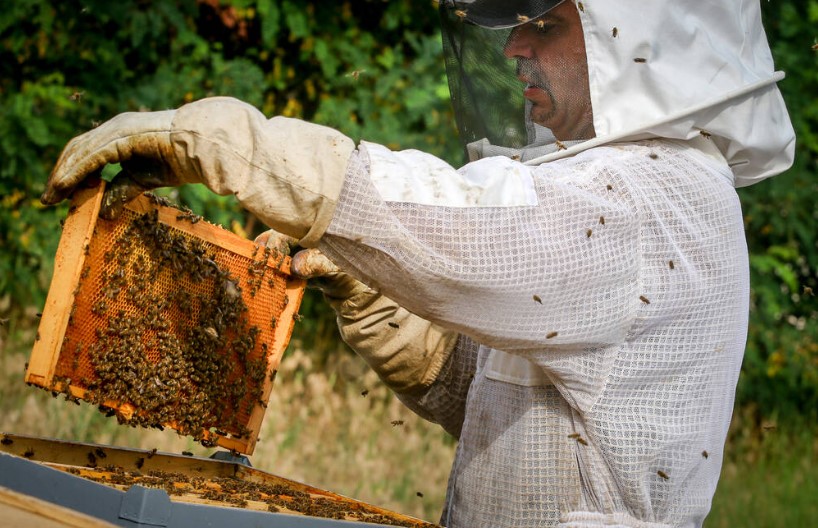
Sizing and Customization
Sizing Options
Available in various sizes, including suits for children.
Customization
Some manufacturers offer custom sizing and feature additions.
Eco-Friendly Options
Materials
Options include organic or sustainably sourced materials.
Manufacturing Processes
Eco-friendly suits use environmentally responsible production methods.
Market and Availability
Brands and Manufacturers
A variety of brands offer suits with different features and price points.
Purchasing Channels
Available online, in specialty stores, and through beekeeping supply companies.
Conclusion
Beekeeping suits play a critical role in the safety and effectiveness of beekeeping activities. The choice of suit depends on various factors like climate, beekeeping frequency, and personal preferences. Proper maintenance and care extend the life of the suit, ensuring ongoing protection for the beekeeper. With advancements in materials and design, future beekeeping suits may offer enhanced protection and comfort.
BEEKEEPING SUITS – FAQs
What is a beekeeping suit?
A beekeeping suit is protective clothing designed to keep beekeepers safe from bee stings while managing beehives. It typically includes a full-body suit, gloves, and a veiled hood.
Why is ventilation important in a beekeeping suit?
Ventilation in a beekeeping suit helps keep the wearer cool and comfortable during beekeeping activities, especially in warm weather, while still providing sting protection.
What materials are beekeeping suits made from?
Beekeeping suits are often made from a blend of cotton and synthetic fibers for breathability and durability, with some high-end suits featuring ventilated fabrics.
How do I choose the right size for a beekeeping suit?
Choose a beekeeping suit that fits loosely to provide room for movement and to create a gap between the suit and skin, reducing the chances of bee stings penetrating through.
Are beekeeping suits sting-proof?
While beekeeping suits are designed to be sting-resistant, they are not completely sting-proof. The suits provide a significant barrier but cannot guarantee total protection against stings.
How should I maintain and clean my beekeeping suit?
Beekeeping suits should be cleaned regularly by gently hand washing or machine washing on a gentle cycle, avoiding harsh chemicals that can damage the fabric or protective features.
Can children use adult beekeeping suits?
It’s recommended to use specially designed children’s beekeeping suits for proper fit and protection, as adult suits may not offer the same level of safety due to size differences.
What are the essential features of a beekeeping suit?
Essential features include durable fabric, a protective veil, elastic cuffs at wrists and ankles, and secure closures to prevent bees from entering the suit.
Is it necessary to wear a full beekeeping suit at all times?
It depends on the level of bee activity and the beekeeper’s comfort level. In some situations, a beekeeping jacket and gloves may suffice, but a full suit offers the most protection.
Can beekeeping suits be repaired if torn?
Yes, small tears in a beekeeping suit can often be repaired with sewing or patching, but significant damage might require the suit to be replaced.
Are there beekeeping suits designed for hot climates?
Yes, there are beekeeping suits specifically designed for hot climates, featuring lightweight and ventilated materials to keep the wearer cool.
What is the purpose of the veil on a beekeeping suit?
The veil protects the face and neck from bee stings while allowing clear visibility and air circulation.
How do beekeeping gloves integrate with the suit?
How do beekeeping gloves integrate with the suit?
Should a beginner beekeeper invest in a full suit?
Yes, it’s advisable for beginner beekeepers to invest in a full suit for maximum protection as they learn about bee behavior and hive management.
Are there differences in suits for hobbyist versus professional beekeepers?
Professional beekeeping suits may have additional features like reinforced fabric and extra pockets, but the primary difference is often in durability to withstand frequent use.
How often should a beekeeping suit be replaced?
The lifespan of a beekeeping suit depends on usage and maintenance, but it’s typically recommended to replace the suit if it shows signs of wear or has significant tears.
What is the best way to store a beekeeping suit?
Store the suit in a cool, dry place away from direct sunlight and ensure it’s clean and completely dry to prevent mold and fabric degradation.
Can I use a regular jacket instead of a beekeeping suit?
A regular jacket does not provide the same level of protection as a beekeeping suit, especially around the neck, wrists, and face.
Are beekeeping suits available in different colors?
Yes, beekeeping suits are available in various colors, though light colors like white or beige are preferred as they are less likely to provoke bees.
What should I do if bees get inside my suit?
If bees enter your suit, remain calm and slowly walk away from the hive area. Remove the suit carefully once you are at a safe distance to release any bees inside.
How does a ventilated suit differ from a regular beekeeping suit?
A ventilated suit has layers of mesh fabric that allow air to flow through while still providing protection, making it cooler and more comfortable in warm weather.
Can beekeeping suits be customized?
Some manufacturers offer customization options for beekeeping suits, including size adjustments and additional features like extra pockets.
Is it safe to share beekeeping suits between users?
Sharing suits is not recommended due to hygiene concerns and the importance of a suit fitting correctly for each individual user.
How do I know if a beekeeping suit is of good quality?
A good quality suit will have sturdy construction, durable materials, secure closures, and comfortable fit, with positive reviews or recommendations from experienced beekeepers.
Are there eco-friendly options for beekeeping suits?
Yes, there are eco-friendly beekeeping suits available, made from organic or sustainably sourced materials and using environmentally friendly manufacturing processes.

